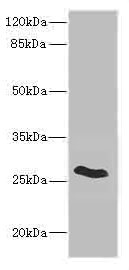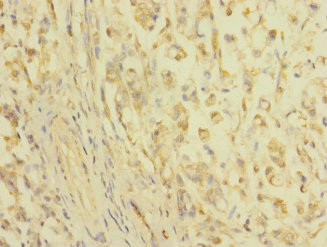To produce the CLDN18 polyclonal antibody, a rabbit was immunized with recombinant human CLDN18 protein (20-80aa). The immunogen was identified as foreign by the rabbit's immune system, triggering an immune response leading to the generation of various antibodies that target different epitopes on the antigen. Subsequently, the antibodies were collected from the rabbit's blood and subjected to antigen affinity purification, resulting in the production of the CLDN18 polyclonal antibody.
This CLDN18 antibody can react with human and rat CLDN18 proteins. CUSABIO has assessed the specificity, sensitivity, and functional activity of the CLDN18 antibody through ELISA, WB, and IHC applications.







